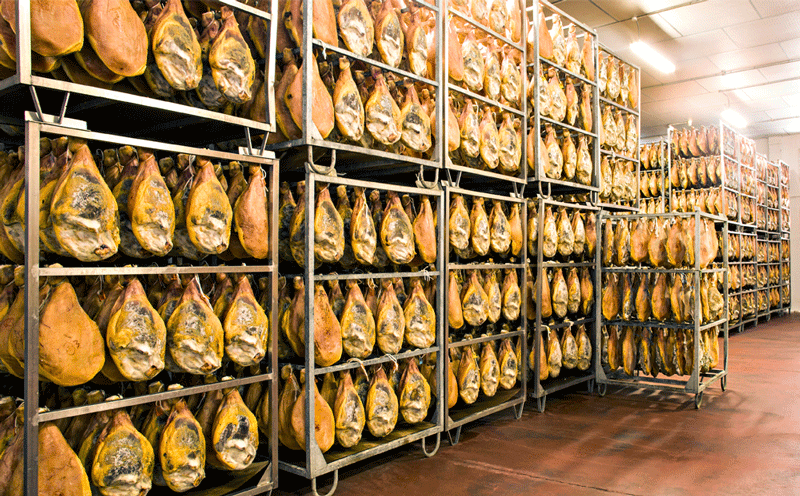The whole ham process, from rearing the pig that provides the raw material to how it is served, is important to get a good quality product.
Today, we want to talk about a vital place in the manufacturing process where the ham will gain much of its flavour and fragrance: the drying area.
Traditionally, ham has been cured in well-ventilated places, generally located in the top rooms of country homes. Depending on the region, grain stores, attics, roof spaces have all been used to hang homemade hams for natural curing, making the most of the weather conditions in each place.
Natural or artificial
Nowadays, the sector’s industry is basically divided into two types of production, depending on the type of drying place that is used: natural or artificial (forced drying place).
One of the great differences between these two types of drying spot revolves around its possible location. Whilst natural drying spots should be located in zones with a climate that helps curing, namely colder, drier climates, artificial spots can be anywhere in the country. This is because this type of drying spot uses equipment to keep it cool and control humidity so they can recreate any climate anywhere and any time of year. Hams made like this usually take less time to cure, helped by this equipment, also in an attempt to get the best use out of the time the cooling equipment is used. In these places, it is relatively simple to get a standardised product although, from our point of view, it is probably ‘flatter’ organoleptically and has less personality than a traditionally-cured ham.
Natural drying areas, as we mentioned, are found in zones featuring seasonal cold and low relative humidity. This explains why some Spanish provinces have been and remain a benchmark in terms of making hams. Teruel, Salamanca, Granada or la Sierra de Aracena in Huelva are, among others, reference points for traditional hams. Their weather conditions mean hams can be cured naturally, giving each ham unique features bound to the area and even each drying spot, due to the mycological flora of each one.
Features of a natural drying area
There are no great secrets to building a natural drying spot. Considering the importance of its location, this place is no more than a well-ventilated warehouse or store where windows can be opened and closed (always depending on the conditions outside) to control the temperature and humidity inside.
There is no typical model. To a large extent, it will depend on how the business works and its own facilities and location. In our case, our natural drying spots are built at ground level to make it easier to move shelves around. It has high ceilings, so ham cages can be stacked up to make the most of this space. They have windows fitted with mosquito blinds on all façades to allow air to circulate and they are not huge, so they are easier to clear out and disinfect. Probably, nothing in their construction makes them very different from other drying spots. However, their location confers particular features that give our hams a very personal touch.


